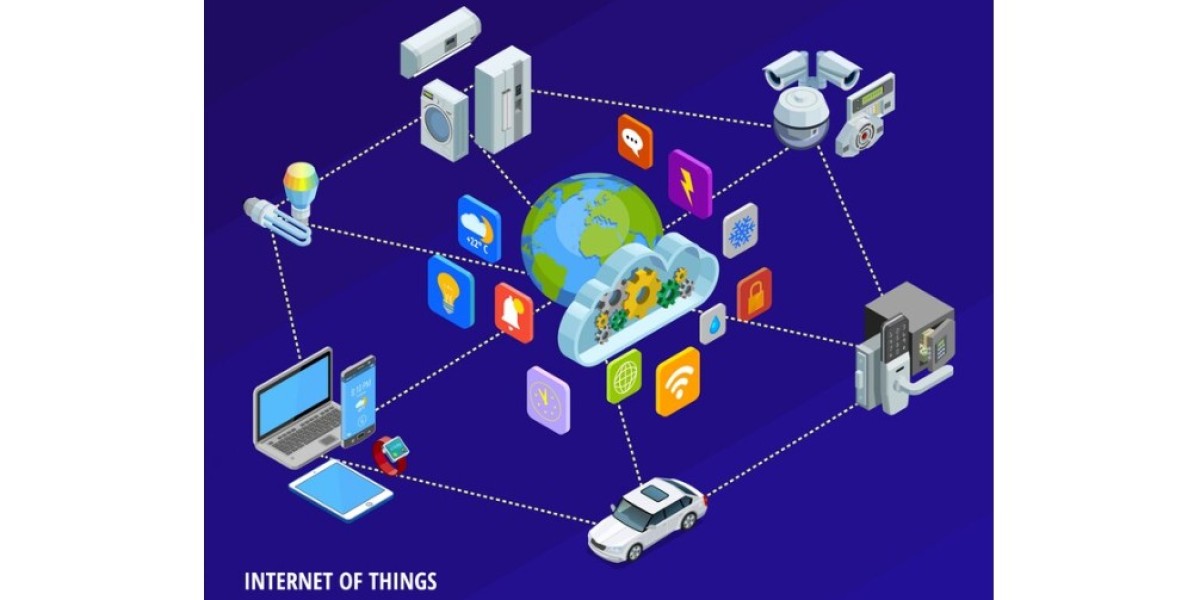The healthcare industry has undergone a remarkable transformation in recent years, and much of it can be attributed to the integration of advanced digital technologies. Among these game-changers is the Internet of Things (IoT), a network of connected devices that share data and interact in real time. IoT in Healthcare is paving the way for a more efficient, patient-centric approach by enabling remote monitoring, personalized treatments, and streamlined clinical workflows. This article delves into the various aspects of IoT in healthcare—from its core applications to its far-reaching benefits and challenges—and explores what the future may hold for this dynamic technology.
1. The Role of IoT in Healthcare
IoT in healthcare refers to an ecosystem of connected sensors, devices, and software applications that capture and communicate critical health data. These devices can range from wearable fitness trackers and smartwatches to implanted sensors and hospital-based equipment. Through wireless connectivity (e.g., Wi-Fi, Bluetooth, cellular networks), patient-generated data is instantly relayed to healthcare professionals, enabling more proactive and personalized care strategies.
Instead of waiting for scheduled check-ups to monitor blood pressure, glucose levels, or heart rate, clinicians can now observe a patient’s vitals in real time. This continuous stream of data not only offers a more accurate picture of a patient’s health but also allows healthcare providers to intervene earlier, reducing the likelihood of complications and hospital admissions.
2. Key Applications of IoT in Healthcare
Remote Patient Monitoring
Remote patient monitoring (RPM) is one of the most notable use cases. By leveraging wearable gadgets such as smart blood pressure cuffs and glucometers, healthcare professionals can track changes in a patient’s vitals on a continuous basis. If anything seems amiss—like a sudden spike in blood pressure—an alert is automatically sent, prompting timely intervention.
Smart Medical Devices and Equipment
Traditional medical devices are rapidly evolving into connected smart devices capable of real-time data exchange. From infusion pumps that adjust dosage based on sensor data to smart inhalers that monitor medication usage, these innovations not only enhance patient safety but also streamline clinical workflows.
Hospital Asset Management
Hospitals house a wide range of high-value assets—ventilators, wheelchairs, diagnostic machines. IoT-enabled asset tracking solutions use RFID tags and sensors to locate equipment in real time. This reduces equipment loss, improves inventory management, and significantly cuts down the time clinicians spend searching for essential tools.
Medication Management
Medication adherence is a persistent challenge, especially for those with chronic conditions. IoT-enabled pill dispensers can remind patients to take medications, monitor compliance, and transmit data back to providers. This ensures better adherence rates and helps providers adjust treatment if patients struggle to follow prescribed regimens.
Telemedicine Integration
IoT in healthcare works hand in hand with telemedicine, extending virtual consultations beyond just video calls. Connected devices feed data (like ECG readings or oxygen levels) directly to doctors during a telehealth session, enabling more accurate diagnoses and tailored treatment recommendations.
3. Benefits of IoT in Healthcare
Proactive and Preventive Care
By providing immediate access to patient data, IoT helps identify early warning signs of disease progression or complications. This allows for proactive treatment measures, potentially preventing hospitalizations and improving long-term health outcomes.
Enhanced Patient Engagement
When patients can track their own vital signs and receive insights into their health trends, they tend to become more involved in their care. This sense of empowerment encourages healthier lifestyles and fosters a collaborative environment between patients and providers.
Operational Efficiency
Hospitals and clinics often operate under tight budgets and limited resources. IoT devices that track inventory, manage patient flow, and predict service demands help administrators optimize resource utilization. Staff can focus more on patient care rather than time-consuming logistical tasks.
Cost Savings
Although implementing IoT solutions can be an upfront investment, healthcare systems often see significant cost reductions over time. Decreased hospital readmissions, streamlined workflows, and reduced equipment loss collectively contribute to substantial savings.
Personalized Medicine
IoT-generated patient data is a goldmine for personalized treatments. With detailed health metrics at their disposal, clinicians can customize care plans, adjust medications in real time, and address individual risk factors—leading to better overall outcomes.
4. Challenges and Concerns
Data Security and Privacy
Healthcare data is extremely sensitive. As more devices connect to hospital networks and cloud servers, there’s a heightened risk of cyberattacks and data breaches. Healthcare organizations must invest in robust encryption methods, secure access protocols, and regular audits to protect patient information.
Interoperability Issues
Hospitals often rely on multiple vendors for different devices and software solutions. Ensuring all these disparate systems can seamlessly exchange data is a significant challenge. Initiatives that promote standardized communication protocols (e.g., HL7, FHIR) are critical for IoT in healthcare to reach its full potential.
Regulatory Compliance
Medical devices are subject to strict regulations. Introducing IoT capabilities into these devices can complicate compliance with agencies like the FDA. Manufacturers and healthcare providers must navigate lengthy approval processes and ensure that any data-driven features adhere to regulatory frameworks.
Implementation Costs and Complexity
While the long-term financial benefits can be substantial, initial implementation can be expensive. Furthermore, integrating IoT solutions into existing IT infrastructure often requires specialized expertise and can disrupt daily operations if not managed properly.
User Adoption
Not all patients are tech-savvy, and some may be wary of continuous health monitoring. Likewise, healthcare professionals may need training to interpret and act upon the constant influx of data effectively. Addressing these adoption barriers is essential for successful deployment.
5. The Future of IoT in Healthcare
Despite the challenges, the future of IoT in healthcare looks incredibly promising. Advances in 5G and edge computing are set to enhance the speed and reliability of data transmission. AI-driven analytics will likely become more sophisticated, enabling predictive models that identify health risks even before symptoms appear. Meanwhile, ongoing miniaturization of sensors will pave the way for more discreet and comfortable wearables.
Telehealth, enriched by IoT data, is expected to expand its scope, providing specialized care in remote or underserved regions. As interoperability standards continue to evolve, data silos within the healthcare ecosystem should gradually diminish, opening the door for a more holistic, data-centric approach to patient care.
Ultimately, IoT technology has the potential to reshape the entire healthcare continuum—from diagnostics and treatment to rehabilitation and wellness programs. By breaking down geographical barriers, offering real-time insights, and personalizing care, IoT is propelling the industry toward a more accessible, efficient, and patient-focused future.
6. Conclusion
IoT in Healthcare is far more than a fleeting trend; it represents a structural shift toward proactive, data-driven care. By connecting devices, patients, and providers, it accelerates diagnosis, streamlines treatment, and significantly enhances the patient experience. While hurdles like data security, standardization, and costs must be navigated carefully, the long-term value of IoT is hard to ignore. As technology evolves, so too will the promise of IoT—a promise that includes better health outcomes, reduced healthcare expenditures, and a system that places patients at its very center.
FAQ
Q1: What is IoT in Healthcare?
IoT in healthcare refers to the use of connected medical devices and sensors that collect and share patient data in real time. This setup enhances monitoring, improves decision-making, and fosters personalized treatments.
Q2: How does IoT improve patient care?
By offering continuous, real-time insights into a patient’s condition, IoT helps in early detection of problems, tailoring treatments, and reducing hospital visits through proactive care.
Q3: Are there security risks associated with IoT in Healthcare?
Yes, security is a primary concern. More connected devices mean more entry points for potential cyberattacks. Data encryption, strict access controls, and compliance with regulations like HIPAA are vital to mitigate risks.
Q4: What types of devices are commonly used?
Common IoT healthcare devices include wearable fitness trackers, smart inhalers, connected glucometers, remote patient monitoring tools, and hospital-based smart equipment (e.g., infusion pumps).
Q5: Is IoT technology expensive to implement?
While upfront costs for devices and software can be high, many healthcare providers see long-term savings through reduced readmissions, streamlined operations, and better overall outcomes.










